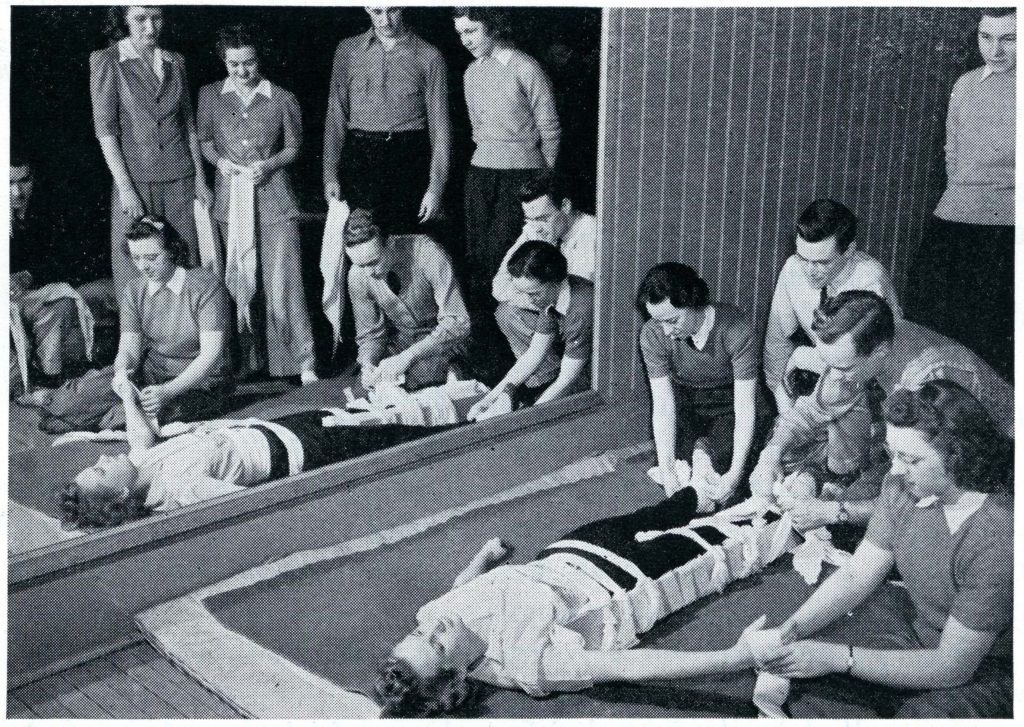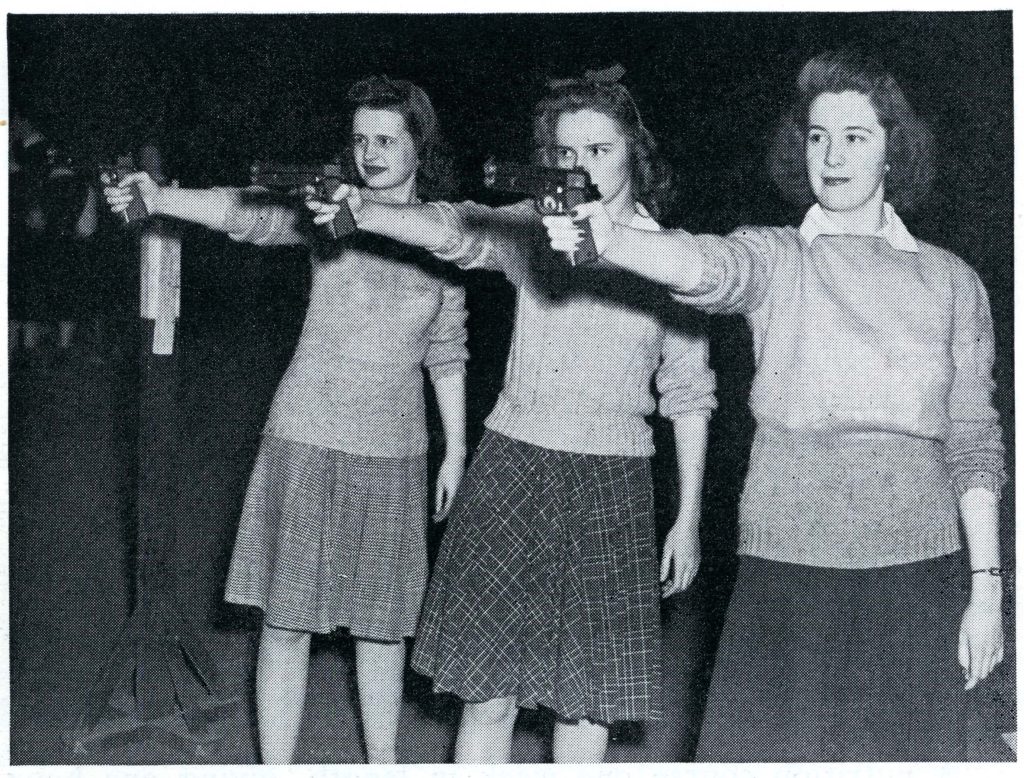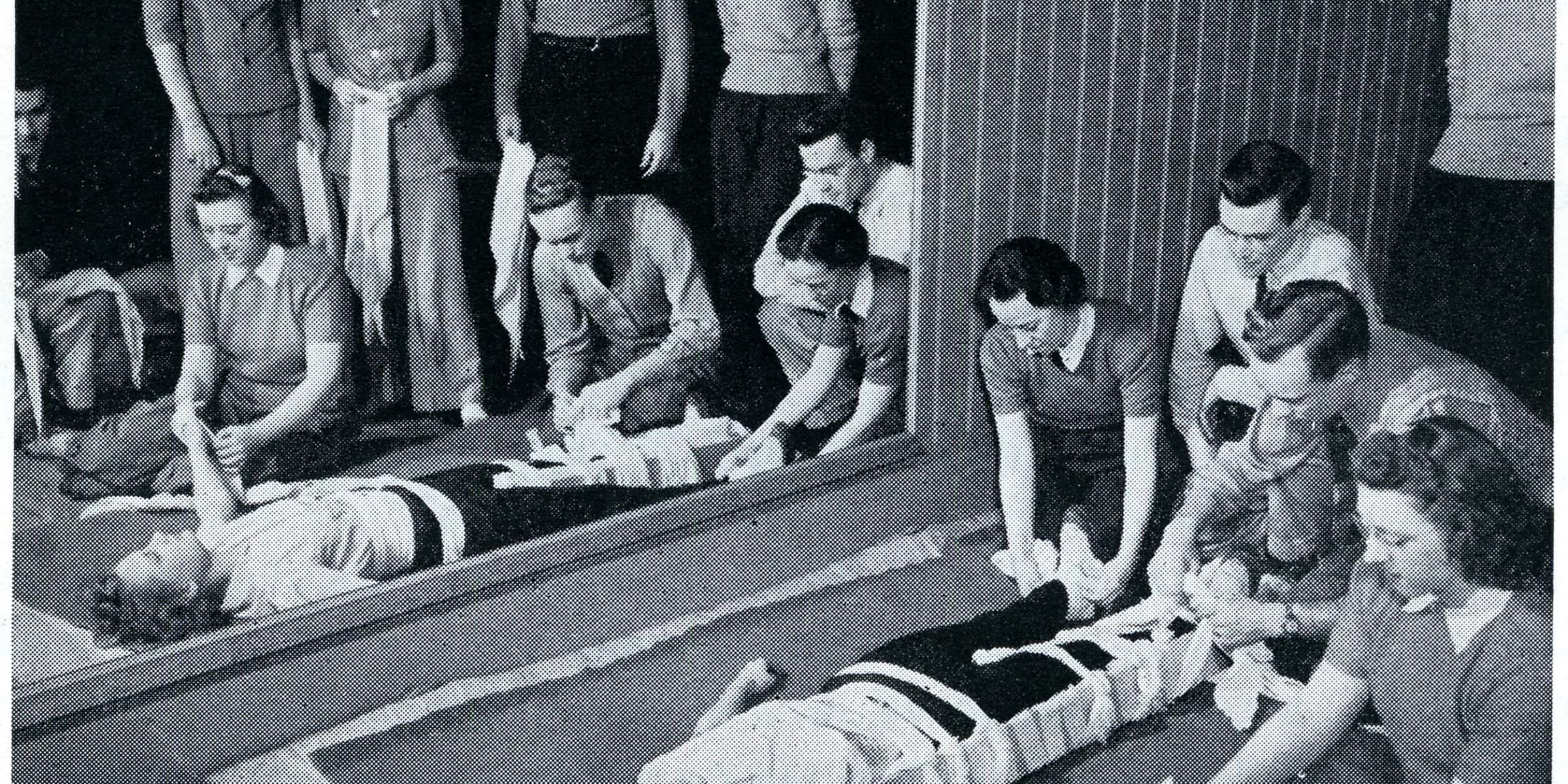Posted on November 21, 2019 by small20
Purdue’s Support During World War II
by Stephen Goula
“Students should not become panicky, but must realize that during the present emergency, as well as the years following the war, there will be a great need for large numbers of men and women trained in the sciences.” (1) These were the words from the Purdue Exponent on December 9th, 1941 two days following Pearl Harbor. Historically, Purdue is known for its involvement in military training because as a land grant institution, male students were required until 1964 to serve a minimum of two years in a military training course. Prior to the United States involvement in World War II, Purdue was responsible for training one-sixth of all field artillery officers in the entire Army. Purdue also maintained support for the war effort during World War I by altering curriculum and initiating programs that would help train and feed soldiers headed to Europe. When Pearl Harbor happened, Purdue like the rest of the nation, was shocked by the catastrophic attack by Japan and again immediately took action to support the war. Without knowing what exactly was to follow Purdue started preparing for a war in the form of training and additional curriculum for students. In 1943 Purdue University was put “on the approved list for both Army and the Navy for engineer training” and Purdue’s quota for the training was around 2500 students starting anywhere from March 1through July 1. (2) What is extraordinary about Purdue’s support of the war is not that it was involved in the first place, but rather how it supported women through military programs during this time period.

A good amount of these programs was geared towards women because of the idea that men had to be made available for overseas duties. This was similar to the approach taken during World War I except now the country, along with Purdue, had learned from its previous experiences and knew the value women had in the war effort. From Pearl Harbor through 1943 the employment of women in the workforce went from 1,500,000 to 4,500,000 and “during the coming year, the government expects one and a half times as many women as men to be employed.” (3) This increase was the result in the need for women to answer the call to support the war effort on the home front. Once war was declared there was a shift in campus life “universal draft registration soon followed,” and “girls, whose brothers and boyfriends could be drafted and sent to war, were anxious and crying. Gradually, enrollment declined and at one point diminished to a little less than 4,000.” (4) With the war effort now picking up the “ratio of girls to men was about 21/1” and this vacuum not only allowed for military training to occur, but also allowed for women to become part of the focal point to Purdue’s war effort within its programs. (5)

The Curtiss-Wright Cadettes was a program initiated by the Curtiss-Wright Corps. This company specialized in the building of aircrafts during World War II and recruited women across eight colleges to become trained in building aircrafts. A group of 115 women with at least one and a half years of college and one year in mathematics was selected by a personal interview for this program. The program lasted ten months and once completed, the women would go on to work for Curtiss-Wright in the engineering department of their plants. (6) Another program Purdue supported during World War II was the Women’s Army Corps. The WAC was a call to women across the nation to volunteer their services to the Army. The WAC propelled women into an unparalleled role within the war effort that was not seen previously. During World War II President Roosevelt authorized the WAC to be expanded to 150,000 women with the intent to “replace trained soldiers needed at the front.” (7) During this era there was great reservation from the American population regarding women wearing the uniform but the presidential administration, along with top military officials, knew just how important women were. Purdue’s ideals aligned with top officials and helped the WAC by recruiting for the Corps and opening the WAC school on Purdue’s campus. Training for WAC personnel consisted “largely of lectures on army organization, adult psychology, personnel management, current history, and the utilization of special services and educational facilities of the army.” (8) The school was led by four WAC officers and trained ninety WAC students at a time until its closure in October of 1945. (9)
Over the course of the United States’ involvement in World War II there were roughly 2500 servicemen along with a little over 200 servicewomen that trained at Purdue. When catastrophe arrived on the borders of the United States, Purdue answered the call to service with patriotism and the forward-thinking approach that the university has enjoyed being known for. Programs such as WAC and the Curtiss-Wright Cadettes showcase the importance of women in support of the war effort. Purdue has always had a rich history supporting military service and programs and it was no different when it came to women entering the service.
- “Administration: Study as Usual,” Purdue Exponent (West Lafayette, IN), Dec. 9, 1941.
- “University to Train 2500 Army, Navy Men” Purdue Exponent (West Lafayette, IN), Feb. 14, 1943.
- “Coeds Train for War Effort,” Purdue Exponent (West Lafayette, IN), Feb. 14, 1943.
- Esther Conelley Boonstra Collection. Purdue Archives.
- Esther Conelley Boonstra Collection. Purdue Archives.
- “Coeds Train for War Effort,” Purdue Exponent (West Lafayette, IN), Feb. 14, 1943.
- “Life in The WAAC,” Purdue Exponent (West Lafayette, IN), Feb. 16, 1943.
- “Top WAC Officer Visits Wednesday To See Unit,” Purdue Exponent (West Lafayette, IN), Apr. 19, 1945.
- “Visiting General to Make Inspection of WAC Unit Thursday,” Purdue Exponent (West Lafayette, IN), Oct. 7, 1945.
Image References: Purdue Archives and Special Collections
Category: Women and Military Leadership at Purdue Tags: feminism, support, war efforts, women in military, women leaders, World War II
